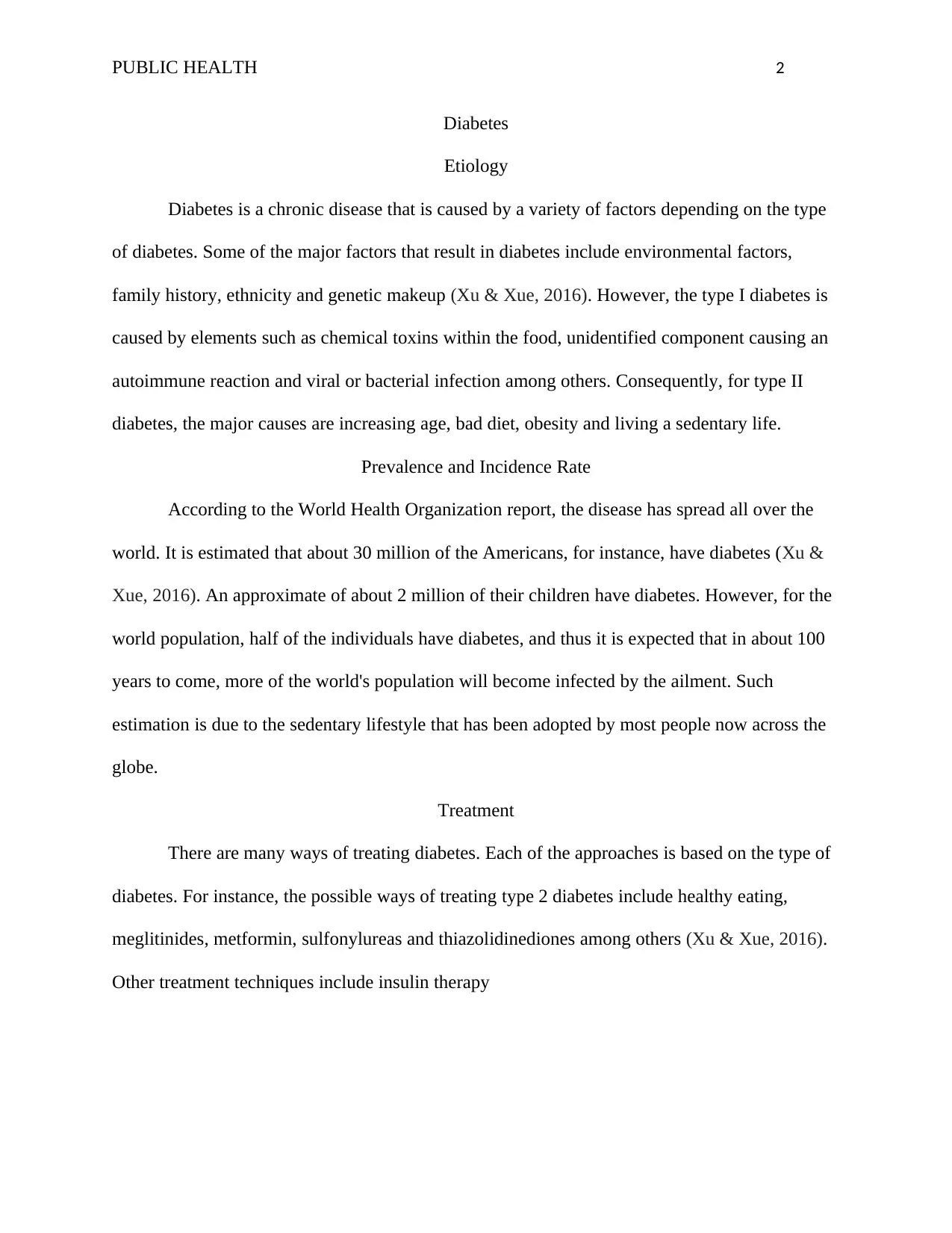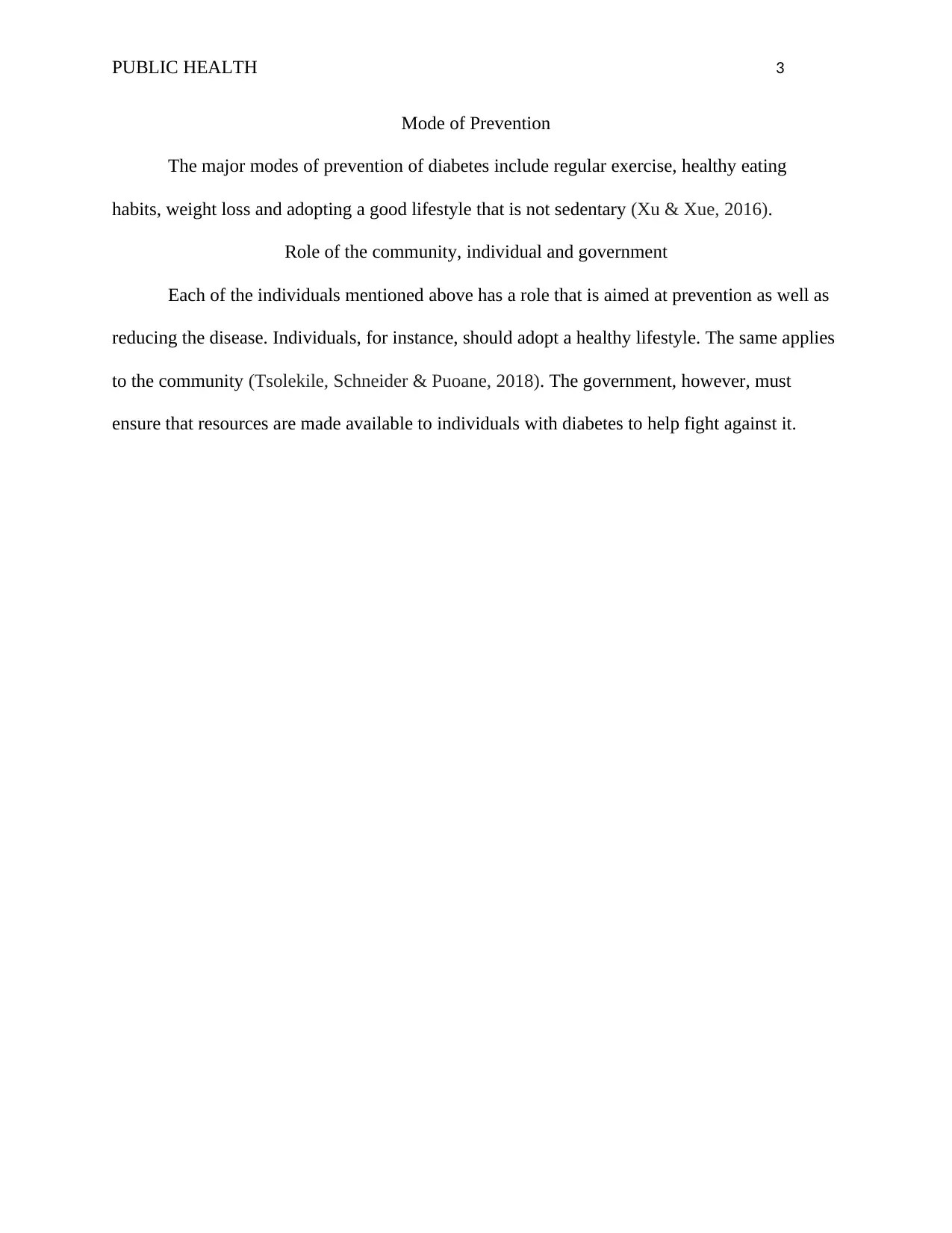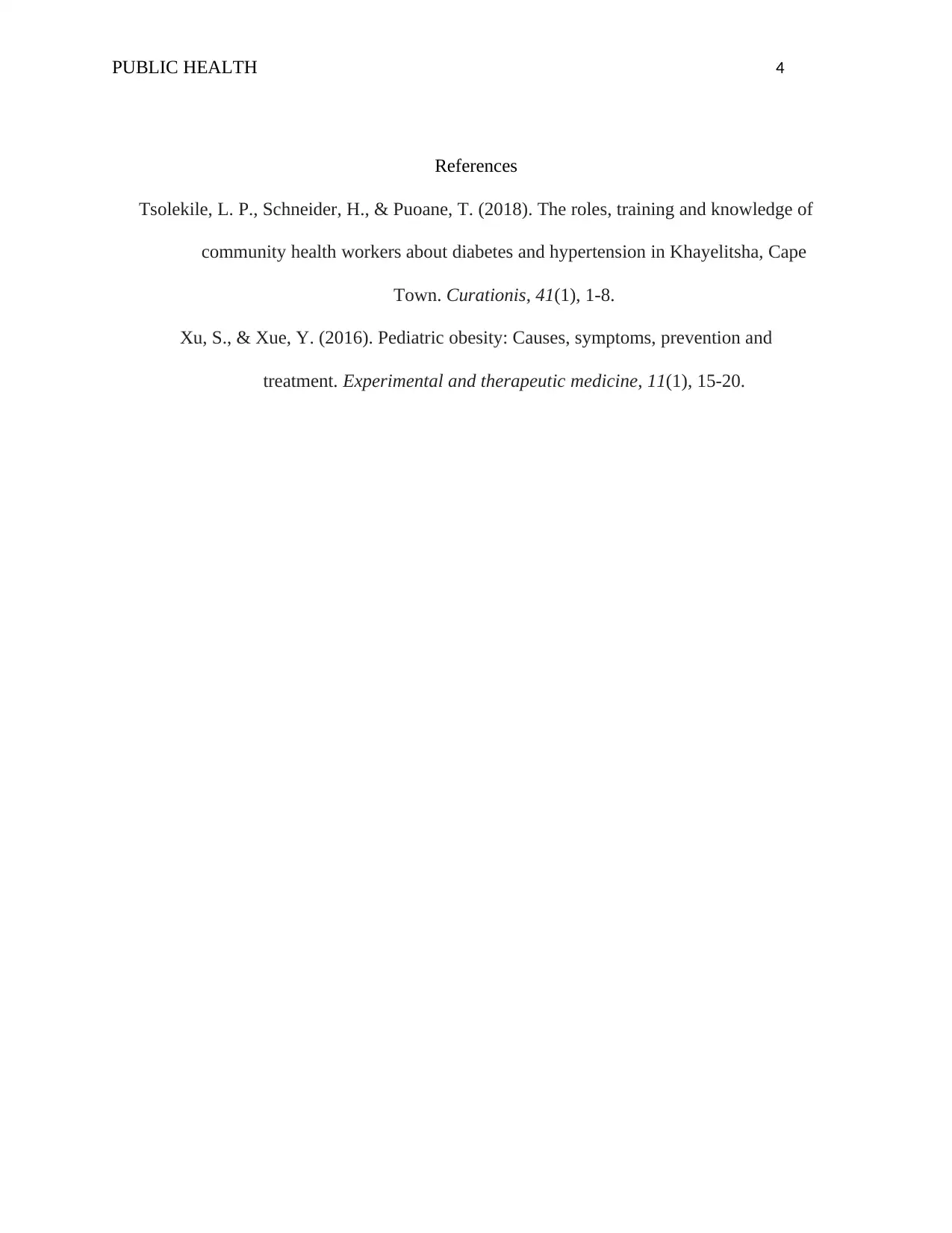Public Health Report: Diabetes Etiology, Prevention and Treatment
VerifiedAdded on 2022/09/27
|4
|492
|26
Report
AI Summary
This report delves into the multifaceted aspects of diabetes, beginning with its etiology, which encompasses genetic predispositions, environmental factors, and lifestyle choices. It explores the prevalence and incidence rates, highlighting the global impact of diabetes, including the rise in cases due to sedentary lifestyles. The report outlines various treatment methods, including medication and lifestyle adjustments tailored to different types of diabetes. Furthermore, it emphasizes the importance of prevention through healthy eating habits, regular exercise, and maintaining a healthy weight. The role of individuals, communities, and governments in combating diabetes is also discussed, underscoring the need for a collaborative approach to reduce the disease's impact. The report concludes by referencing relevant literature, providing a comprehensive overview of diabetes from a public health perspective.
1 out of 4










![[object Object]](/_next/static/media/star-bottom.7253800d.svg)